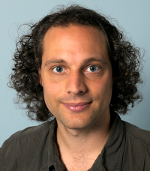Events Calendar
Abstract: Treatment planning in radiotherapy is an important but challenging aspect of the treatment preparation. However, conventional manual treatment planning is a tedious and time-consuming task. This is because it is not clear upfront which dose distribution shape the individual patient’s anatomy allows. In addition, conventional treatment planning systems are designed to provide a treatment plan based on the user’s input and will not by default strive for lower doses within given constraints.
By automating treatment planning, doses to healthy tissues are maximally reduced within treatment constraints. Plans are therefore of high, and consistent quality. It also allows exploration of different treatment options and modalities for each patient, thereby further personalising the treatment. In addition, automated treatment planning is an enabler for online adaptive radiotherapy. One of the main challenges in automated treatment planning are configuration of the protocol used for automation, and optimisation time.
Even though treatment planning time can be considerably reduced, it will not shorten the time for the full clinical process. In an ideal situation, the patient receives a CT-scan in the morning, has a consult in the afternoon, after which the treatment starts next day. This is currently not possible due to the many dependent processes and actors in the treatment preparation process. Also, the attention for the patient is fractionated. With instantaneous treatment planning, the physician would be in direct control of the treatment planning workflow, reducing idle time between different processes. By integrating automated treatment planning and deep learning, instantaneous treatment planning should become feasible!

About the speaker: Sebastiaan Breedveld studied applied mathematics in Delft, University of Technology. With a strong desire to work in a medical environment, he started his MSc project in 2004 in radiotherapy treatment plan optimisation at the Erasmus University Medical Center in Rotterdam. The goal stated was simple: “Find us something to make better treatment plans.” Making tighter dose distributions was a first step. But how does a desired dose distribution look like? Unhindered by any knowledge or understanding of radiotherapy, he asked around for planning goals, and wrote them down on a list. This eventually evolved in the “wish-list” concept, which enabled automated treatment planning and Erasmus-iCycle was born.
Breedveld pursued his PhD project on this topic from 2006 on, where the first patient was treated in 2010 with the aid of his work on automated treatment planning. He received his doctorate with honours in 2013. From the perspective of operational research, automated treatment planning in radiotherapy is a unique application, and requires some extensions in that field. Hereto, Breedveld received the Multiple Criteria and Decision Making (MCDM) Doctoral Dissertation Award in 2015. In 2016 he was appointed as Assistant Professor, and obtained a NWO Veni grant on Large-scale improvement of radiation treatment of cancer patients aiming at easier automation of treatment planning, while also striving for improved clinical trade-offs, and faster generation of treatment plans. In 2021, he obtained an NWO Vidi grant to achieve Instantaneous Treatment Planning.
After the clinical introduction of Erasmus-iCycle in the Erasmus University Medical Center in 2010, around 850 patients/year are treated with the aid of automated treatment planning. Recently, Elekta implemented this automated treatment planning cocept in their recent version of the Monaco TPS. He gave a TEDxDelft talk in 2016 on the topic of maximally utilising the available treatment hardware by using advanced algorithms (i.e Erasmus-iCycle), and released an open dataset (TROTS dataset) to enable cross-institutional testing and validation of algorithms for (multi-criteria) optimisation in radiotherapy in 2017.
